Middlesbrough, a town with a proud industrial past, has seen its fair share of iconic buildings that have played key roles in its development. One of the most prominent structures that once stood tall in the heart of Middlesbrough was the Royal Exchange Building.
For those with an interest in Middlesbrough’s history, the story of this grand building evokes memories of a time when the town was expanding rapidly due to its steel and shipping industries.
But what exactly happened to the Royal Exchange Building, and why does it no longer stand today?
The Birth of the Royal Exchange
The Royal Exchange Building was opened in 1868 during a time when Middlesbrough was rapidly growing into one of the most important industrial hubs in England. Designed by architect William S. Grainger, it was an imposing structure situated near the railway station just south of the St Hilda’s area and Queen’s Square – the historic heart of the town. It was created to serve a vital role as a commercial hub where merchants, shipowners, and industrialists could meet to conduct business. Middlesbrough’s booming iron and steel industry required such a meeting place, and the Royal Exchange filled that need with grandeur.
Architecturally, the Royal Exchange was built in the Italianate style, a popular design choice in the Victorian era. Its elegant design, featuring grand arches and intricate stonework, symbolized Middlesbrough’s aspirations and reflected the wealth that was pouring into the town from its growing industries. The building was not just a practical venue but a statement of the town’s status in the industrial world.
Inside was a large hall, with individual meeting areas. It also housed dining rooms.
A Hub of Activity
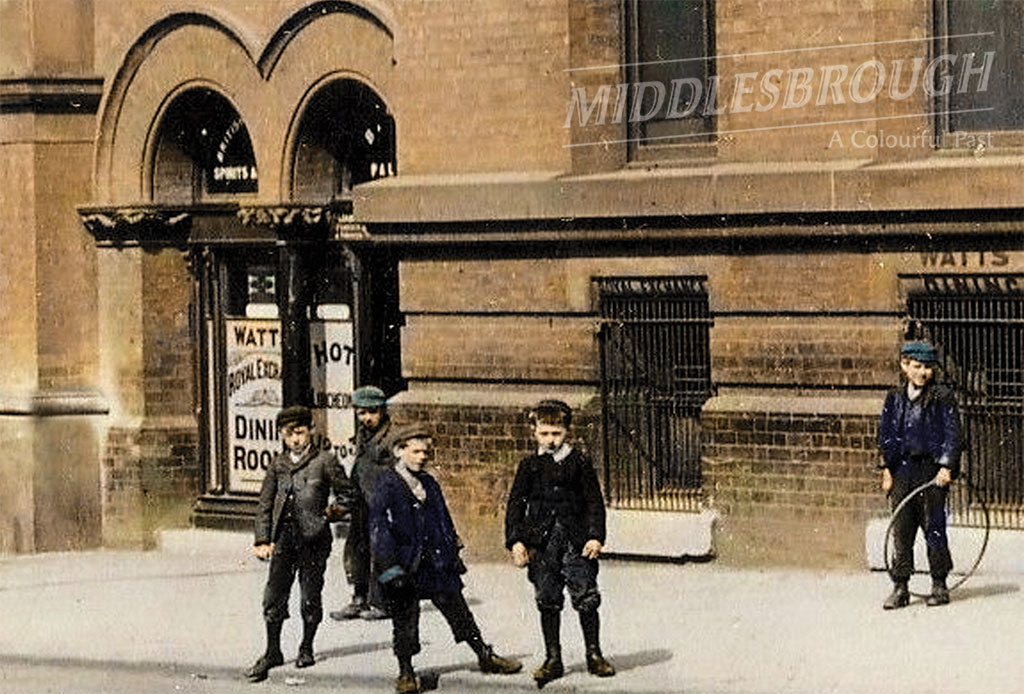
Boys outside the entrance of the Royal Exchange. Photo from Middlesbrough – A Colourful Past
During its heyday, the Royal Exchange was the beating heart of Middlesbrough’s commerce. Shipowners and iron magnates would gather here to negotiate deals, discuss trade routes, and track the prices of raw materials that powered the industrial revolution. It was a vital venue for the exchange of not only goods but ideas and strategies that would shape the region’s industrial future.
Additionally, the building wasn’t just limited to business. It hosted social events and public gatherings, adding to its role as a central part of the community. Middlesbrough was growing rapidly during the late 19th century, and the Royal Exchange embodied that dynamism.
However, as the 20th century progressed, the town’s industrial focus began to shift, and with it, the use of the Royal Exchange began to wane.
Decline and Demolition
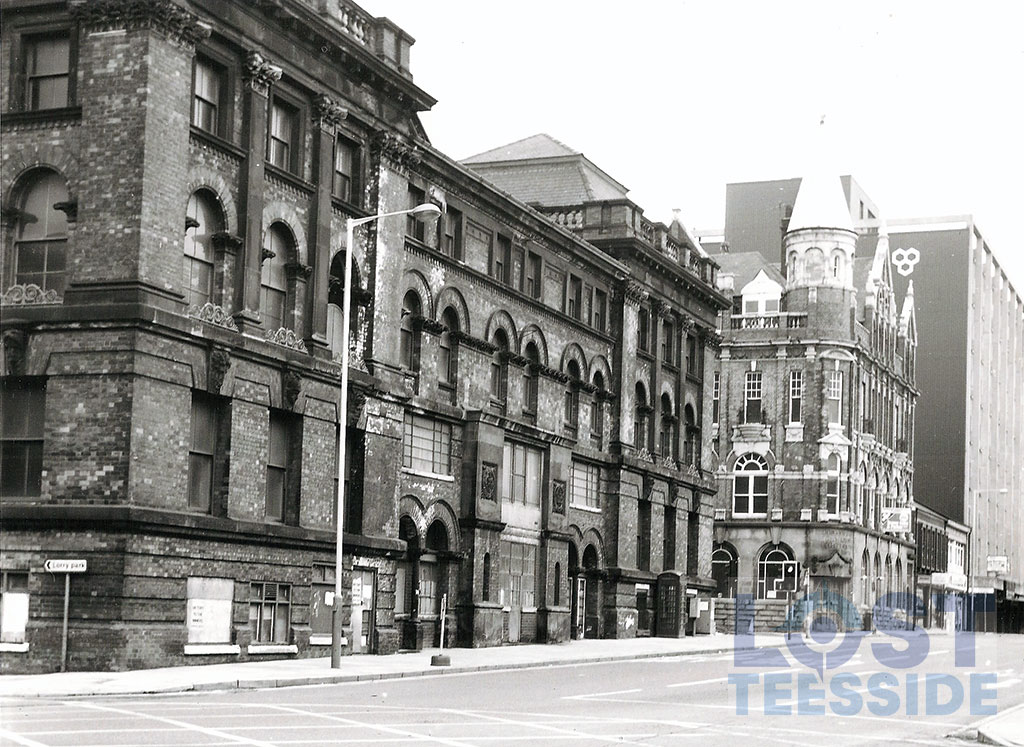
A 1960s shot of the Royal Exchange, with Albert Road beyond.
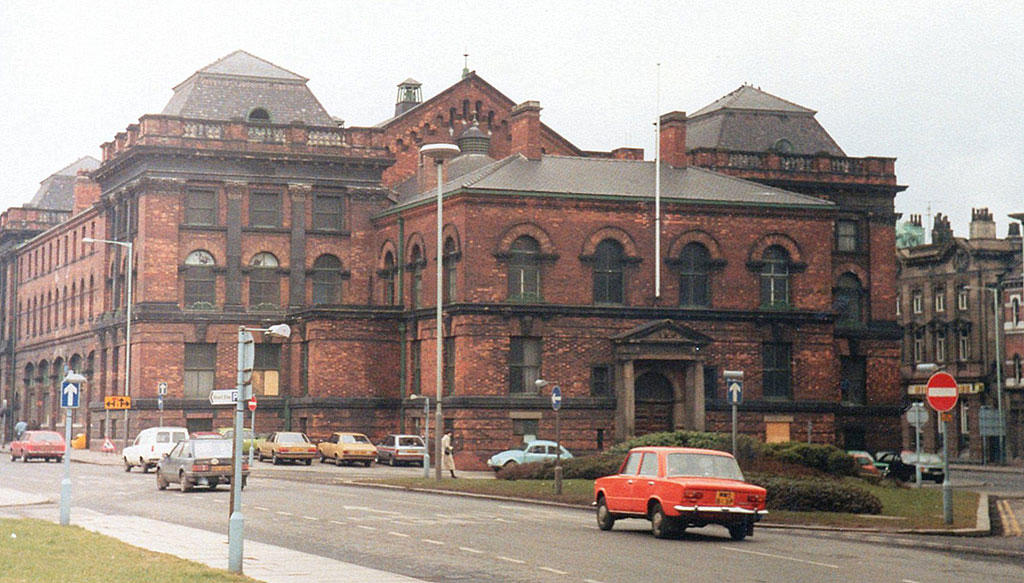
By the early 20th century, Middlesbrough’s economic landscape had changed. The town, once thriving on the back of the steel industry and its associated trades, faced economic downturns, and the focus of business shifted away from the once bustling Royal Exchange. As trade practices evolved and modernized, there was less need for a central exchange building. In many ways, the decline of the Royal Exchange mirrored the decline of the industries that had made Middlesbrough famous.
By the 1960s, the building was in decline. It had been damaged during the Second World War, and while there was talk of restoration, no substantial action was taken to preserve it. The expansion of new commercial hubs and the redevelopment of other parts of Middlesbrough took precedence. In a time when modernism and redevelopment were seen as the way forward, the historic Royal Exchange, like many Victorian buildings across the UK, was viewed as outdated.
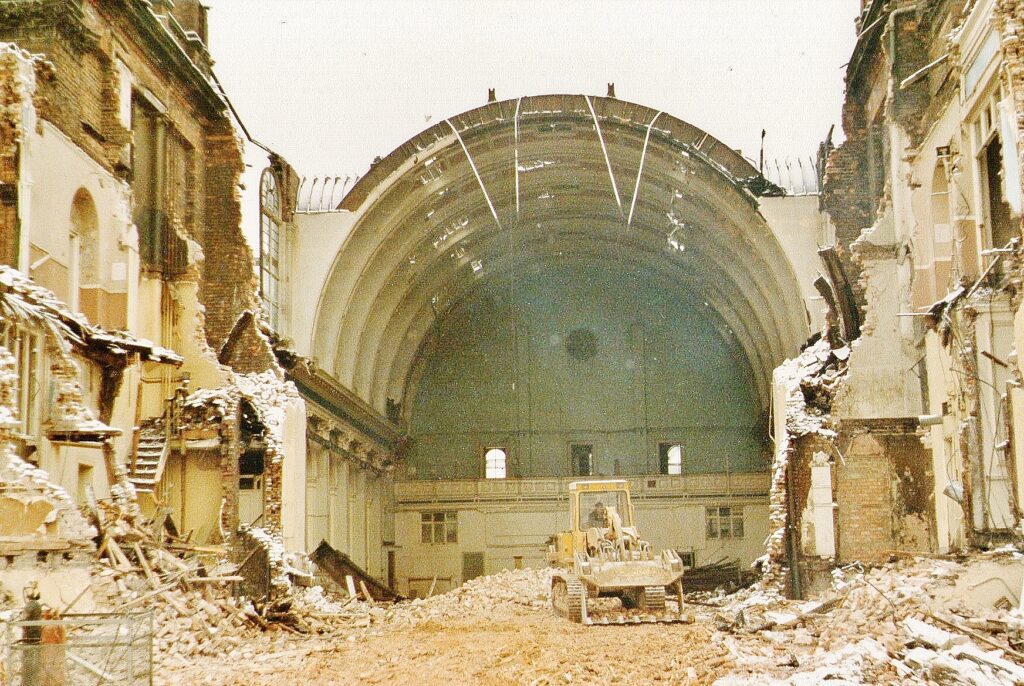
The Royal Exchange under demolition.
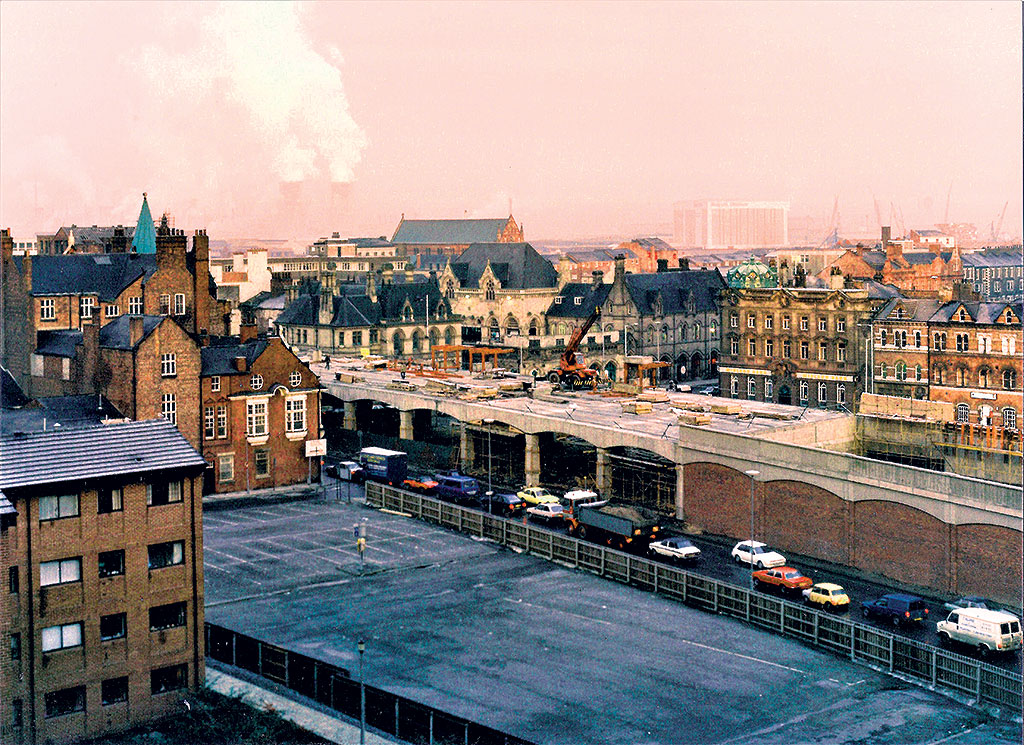
The A66 being built on the site of the Royal Exchange. From Middlesbrough 1920-2020 – A Century of Change
In 1981, after years of neglect, the decision was made to demolish the Royal Exchange.
The proposed new route of the A66 trunk road which was being built to bypass the busy smaller roads linking Middlesbrough to Stockton and beyond was earmarked to carve a route straight through the heart of Middlesbrough. A new elevated roadway would pass directly over the site of the Royal Exchange, and see other parts of Middlesbrough’s centre demolished.
The building’s loss was a sad moment for many residents who had seen the building as an important part of their town’s identity, but at the time, it was deemed unsalvageable. The demolition marked the end of an era for Middlesbrough, as the Royal Exchange had once stood as a testament to the town’s industrial might.
The Legacy of the Royal Exchange
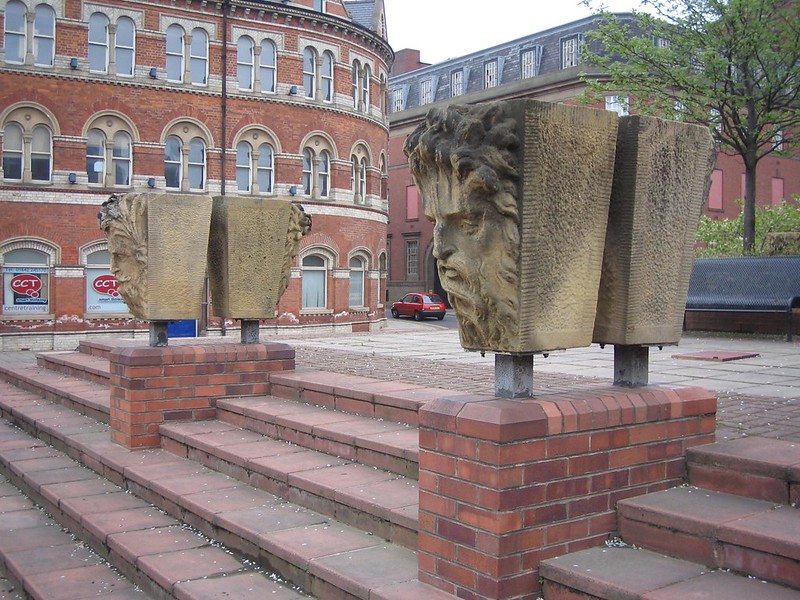
The keystones on display in Exchange Square. Photo (c) Chris
Though the Royal Exchange no longer stands, its legacy is still remembered by those with a passion for Middlesbrough’s history. It played a key role during a pivotal period of the town’s industrial expansion. Today, the site where it once stood is an open square alongside the A66 motorway, as well as the town’s railway station and many other historic buildings which form part of the Historic Quarter – an area which has seen some funding to preserve its heritage.
Some of the concrete busts and keystones, as well as some of the plaquest and architectural details were saved during demolition and are now displayed on plinths in Exchange Square, where the building once stood.
Conclusion
The Royal Exchange Building may no longer be a physical part of Middlesbrough’s landscape, but its impact on the town’s industrial and social life during its prime cannot be overstated. It was a symbol of a time when Middlesbrough was at the forefront of industrial Britain, a place where deals were made, fortunes were created, and the future was shaped.

